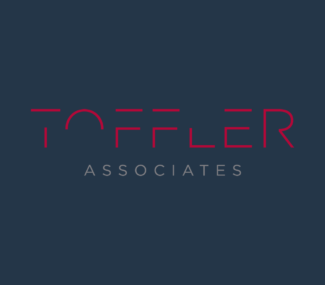Perfect Innovation is a Dangerous Myth

A brief history of the iconic toy manufacturer LEGO offers a clear argument that the traditional notion of perfection is the enemy of our modern reality. Historically, only by those companies able (and willing) to spend years on R&D have attained this status. Today, we know that time can destroy success, and that perfection may be a moving target.
LEGO long sustained a strong reputation as an innovator and quality leader in the very competitive toy market. The company spent decades positioned ahead of the competition. And yet, in the late 1980’s, a market disruption knocked LEGO temporarily off its perch. Handheld computer games were revolutionizing the toy industry. Already massively ‘new,’ the game companies introduced new versions every one or two years. LEGO, on the other hand, had a meticulous three-year development cycle for new products. Their careful cadence was born from a commitment to intense consumer research and a culture focused on perfection.
Faced with this competition from electronic games, LEGO endured the largest sales drop in its long history. It took the company 20 years to shorten its R&D cycle and time-to-market to a year. They cultivated an ability to bring unique new products to market faster and to improve them incrementally and quickly based on sales and consumer feedback. At that point, LEGO was able to reclaim large yearly sales growth (a testament to the importance of quality).
The Risk of Innovation
In almost every corner of the marketplace, the pressure to develop with new ideas is tremendous. Organizations likely to push for innovation often have cultures that demand perfection and emphasize giving everything – from workouts to work hours – 110% effort. Plans and concepts are worked, re-worked, iterated, and reiterated, all in the name of finding the one perfect solution to an increasingly complex set of problems.
Inarguably, focus and effort are important success measures. But we need to acknowledge that perfection and innovation are not necessarily allied. The modern pace of change is so rapid – by the time a ‘perfect’ solution emerges, the problem set has changed.
Voltaire is credited with the assessment that “perfect is often the enemy of good.” Across time, other philosophers have articulated their version of this principle. General George Patton put it appropriately for our modern competitive environment when he said: “A good plan today is better than a perfect one tomorrow.” And Mark Zuckerberg emblazoned the walls of his (then startup) Facebook with the call to action, “Done is better than perfect.”
The concept that a good and useful innovation is better than a perfect one is becoming ever more relevant in our Knowledge Age. Startups so often fail because they are too slow to bring their good ideas to market, sacrificing first mover advantage or disruption in their pursuit of the perfect product. We all know The Pareto Principle (or more ordinarily, The 80–20 Rule). The concept is that it takes 20% of our effort to get a task 80% of the way finished, and 80% of our energy to complete the last 20%. To that end, the exertion it takes to achieve absolute perfection makes that goal nearly impossible.
Robert Watson-Watt developed early warning radar in Britain to counter the rapid growth of the Luftwaffe. He explained this balancing act saying, “Give them the third best to go on with; the second best comes too late, the best never comes.” When increasing our effort results in diminishing returns, further activity is increasingly inefficient – and the market consequences of that delay are very real.
The Antidote to Perfection
In our increasingly dynamic environment, the best path to innovation is not a goal for perfect. Rather, it is an agile, collaborative organization committed to iterative improvement and set up to deliver results quickly. Organizations must be set up to bring their ideas to life in an environment where new disruptions and consumer expectations are expected. A first step in setting up a resilient innovation capacity is to recognize the external impacts that are shaping the market.
Changing laws, standards, and technologies make “perfect” irrelevant.
In our Knowledge Economy, the speed of progress often diminishes the value of a solution before it ever has a chance to do any good at all. For example, autonomous vehicles, biotechnology, production efficiencies, and demographics all are impacting how we develop infrastructure. What that means is that a typical 10-year planning cycle to invest in repairing badly deteriorated infrastructure may be irrelevant because any useful improvements could be obsolete by the time we build them.
Expectations continually drive the goalpost forward.
Regardless of how efficient we become at imagining the perfect product, the market will await improvement (impatiently). Collaboration and iteration are the only good answers to this constant underlying expectation. Apple is a good example of a company that does this well. Their process of making incremental improvements to its core products, rather than trying to unveil entirely new ones, allows them to meet consumer expectations regularly and to create and recreate their markets. The model allows an organization to spend more effort listening to the market and strengthening weak components based on that insight, and less on pivoting or starting over entirely.
Constant perfection stresses the “human” component.
The modern workforce is more resourced, skilled, and driven than any other in history because the boundaries between humanity and technology are blurrier than ever. In this ‘always connected’ reality, Employees pressured to reach ‘perfect’ are ripe for burnout. As with any high-performance engine, teams and people degrade if they’re run at full throttle continuously. At worst, it destroys the team. Only slightly less significantly, it fundamentally degrades the capacity for innovation. To combat fatigue, boost morale, and foster creativity, operations should create a secure space for any employee to bring forth an idea that could contribute to the shared goals of the organization. Not only does this approach enable collaboration, it supports the agility for frequent course corrections while continually satisfying demand.
Electronic Game Companies are Being Beat by Their Own Game
Some of those same electronic game makers that changed the toy market for LEGO today are finding it hard to compete in the very environment they helped to create. Most of today’s game developers now release games in beta to bring products to market quickly enough to secure first-mover advantage, as well as to solicit consumer feedback. Games and apps get updated continually as technology advances and customer feedback warrant – all the while earning revenue that would have been lost had the developers “waited until they got it perfect” to release.
There’s no doubt that exactness has tremendous value – particularly in a micro sense. The paradigm shift we’re seeing is that today’s definition of ‘perfect’ does not mean flawless – it means good enough and regularly improving to satisfy demand.
_______________________________________________
Toffler Associates Offers a Perfect Solution
Toffler Associates FULL SPECTRUM EXPLORATION® (FSX®) business consulting services help organizations learn to identify actionable solutions to hard problems. FSX® teaches organizations to work collaboratively and innovate with agility by:
- Understanding consumer needs and the underlying drivers influencing how those needs evolve
- Introducing holistic approaches that uncover fresh insights about how to use your people, tools, and methods to increase company value
- Enabling innovation by overcoming organizational barriers, understanding market biases, and leveraging external connections
- Providing business enablers including a diverse, collaborative environment where new ideas are encouraged
- Leveraging the power of teams to drive solutions to market in a compressed timeframe
FSX® can help your organization avoid allowing perfect to get in the way of good so you can bring your ideas to market quicker and improve them based on market conditions, technology, and consumer feedback.
It’s time to build the capacity to shape future operating environments for a profitable, sustainable future.
{{cta(‘bc9ba0a2-ec02-401a-8b7c-a568db3188ce’)}}
- Categories
- Security and Resilience
- Strategic Planning


 About the Authors
About the Authors